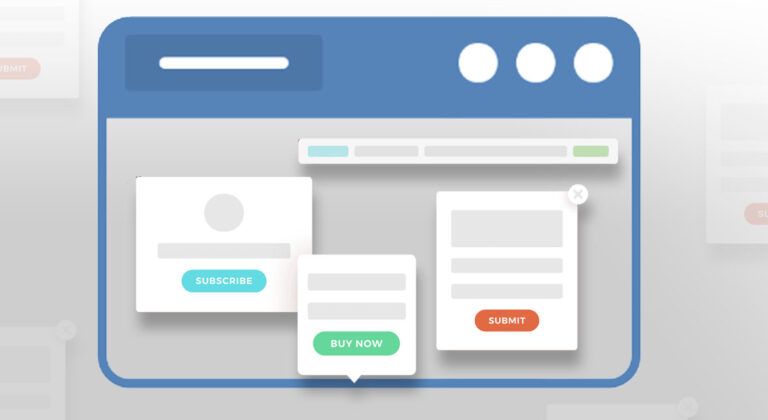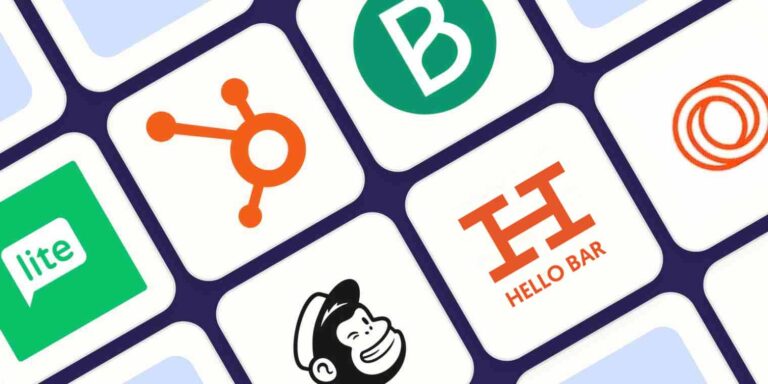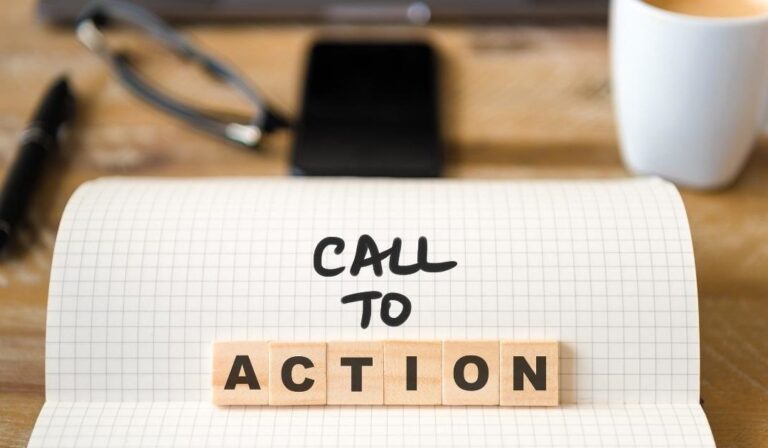Copywriting Tips: 23 Ultra Effective Steps to Increase Conversions

I hope you enjoy this blog post. If you want Hello Bar to grow your leads, click here.
Author:
Ryan Bettencourt
Published
August 1, 2024
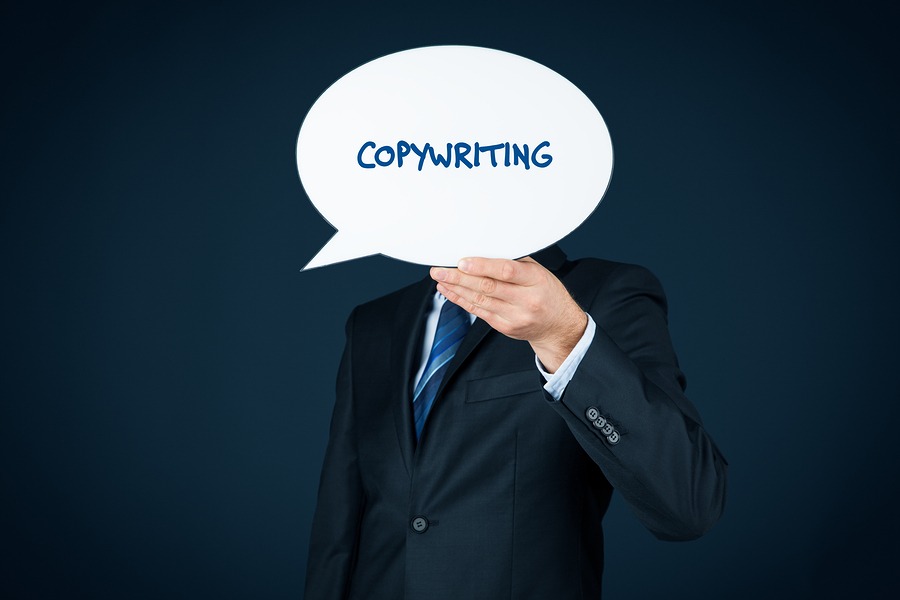
Question: Who needs copywriting tips? Answer: Everyone who writes copy.
Copywriting is sometimes a bit misunderstood. People assume you just write whatever comes to mind and hope for the best.
It doesn’t work like that. You need to know the best copywriting skills in the industry if you want to boost conversions. People don’t respond well to poor copy.
Even if you’re not the most skilled writer, you can write copy that converts. You just need a few strategies to help you understand what your readers want— and how to press their buttons.
We’ll define a few concepts first, then dive into our 23 copywriting tips (plus five bonus tips for email copywriting). Let’s get started!
What is Copywriting in Marketing?
Copywriting refers to the process of writing text that will appear in marketing assets. For instance, a copywriter might be tasked with preparing the following documents:
- Blog posts
- Sales emails
- Product descriptions
- Landing page copy
- Lead magnets
- Ad copy
- Social media posts
The list goes on. Copywriting has existed for much longer than the Internet, but in the good old days, copywriters typically worked freelance or for ad agencies and wrote for print, television, or radio.
Today, copywriting is far more diverse. Its purpose remains the same, though. You want prospects to convert.
How do you make that happen? You collect as many copywriting tips as you can and practice, practice, practice.
What is Sales Copy?
Sales copy isn’t much different from marketing copy except that it focuses on a specific conversion.
Instead of asking visitors to sign up for your email list, follow you on Twitter, or something else, you’re asking for the sale.
There are two primary elements that distinguish marketing copy from sales copy:
- Length: When you’re asking for the sale, you want to be brief. You’re not explaining complex topics — you just want the visitor to buy your product.
- CTA: You’re specifically asking the reader to buy from you.
Otherwise, the same copywriting tips apply to both types of copy.
You May Also Like:
- How To Create a Sales Funnel: 11 Proven-to-Work Conversion Tips
- Email Popups – 13 Best Practices to Insanely Grow Your Conversions
23 Most Effective Copywriting Tips for Beginners That Will Greatly Increase Conversions
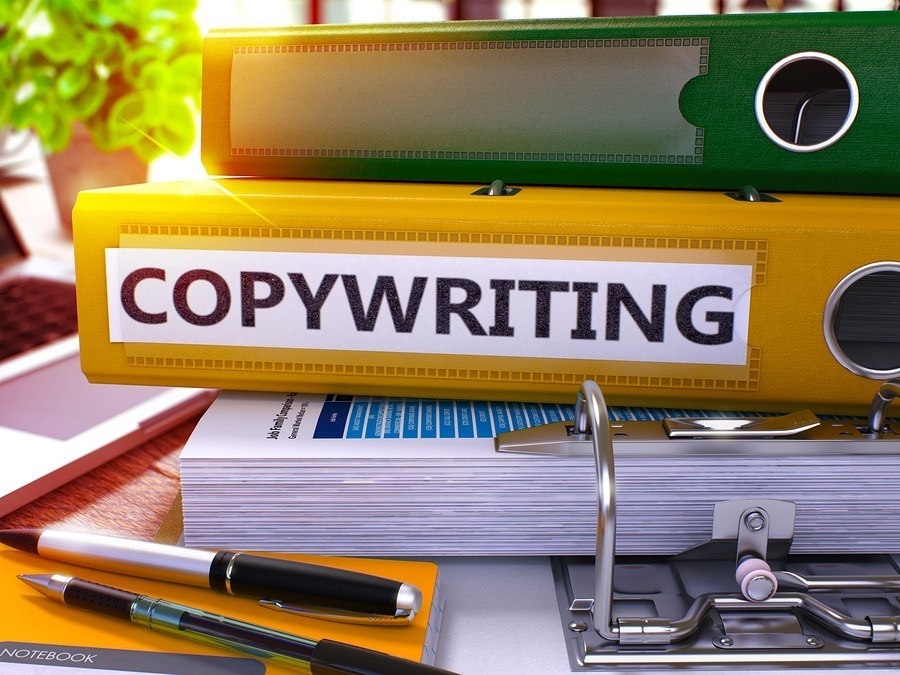
If you want to improve your copywriting, you need sound advice with which to begin. That’s what we want to offer next.
Implementing these 23 copywriting tips makes connecting with your audience easier. It also helps convince them to act on your offer, converting them to paying customers.
1. Keep Your Copy Simple
Your target customer has a to-do list as long as his arm, people calling and texting him, and a boss breathing down his neck. Think about that customer when you’re writing content.
If you’re too wordy, you’ll turn off your audience. People don’t have time to wade through fluff and filler to get to the good stuff.
Start by cutting unnecessary words. Does that adjective help clarify the sentence, or is it just dead weight? Could you remove that adverb without altering the sentence’s meaning?
Then, move on to the phrase and sentence level. You’ll be surprised. Sometimes, you can cut whole paragraphs without harming your content.
Hiring a freelance writer will be wise if you need help simplifying your content and cutting out unnecessary phrases.
2. Use Specific Numbers and Examples To Draw Attention and Increase Credibility
People really love numbers and statistics. They’re firm. They don’t change. They help quantify an idea or argument.
Consider these two sentences:
- Many people prefer to run at night.
- Nearly 60 percent of respondents to a recent study reported they prefer to run at night.
Which sentence carries more weight? The second one, right?
You can run a Google search for any keyword and add “statistics” to your search string. Just ensure you’re referencing high-quality publications and linking back to the source.
Examples help, too. For instance, in a recent Hello Bar blog post on lead generation strategies, we used actual Hello Bars to illustrate our points.
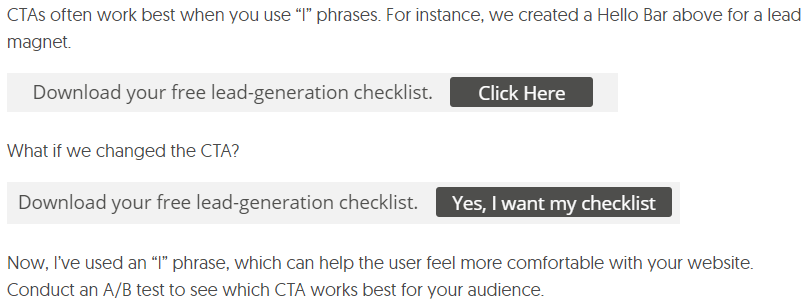
That’s a great way to keep readers on the page.
3. Tell People Exactly What You Expect Them To Do
One of the best copywriting tips we can share is that you don’t have to beg, plead, or cajole your audience. Just tell them what to do.
You don’t have to sound like a cop issuing orders. Gentle guidance does the trick.
Let’s say you’re creating a Hello Bar for a lead magnet. You don’t need much copy to convince your audience to click.
In fact, you want a brief headline and CTA.
![]()
In this example, we’ve given a command. It’s subtle, but it incorporates a benefit we think readers would appreciate.
Then, we mirror or echo the command in the CTA. We also switched to the first-person point of view of the customer.
4. Give People a Reason, Then a Better One
What if we switched up the headline and CTA from the Hello Bar above? We could offer two incentives to convince people to sign up for our email list.
![]()
That’s just 13 words of copy, but we’ve managed to give the reader two incentives to join our mailing list. One appears in the headline, and the second in the CTA.
You can use copywriting tips like this to give your words more weight and to capture your audience’s attention.
5. Don’t Walk Away From Objections in Your Copywriting
Marketers fear objections. That’s because they’re real.
We all encounter objections. Let’s say we want a new pair of running shoes because our old shoes are at the end of their rope. We can afford a new pair, and we’re at a store that sells running shoes.
Still, we might leave the store without making a purchase. Our objection list could look like this:
- We don’t feel like breaking in a new pair.
- Our old shoes can last at least a few more months.
- Perhaps we can get a better price elsewhere.
- We have a meeting in an hour, so we don’t have time to try on lots of shoes.
We could go on. Many objections run through consumers’ minds—sometimes, they’re not even conscious of them.
If you confront potential objections head-on, you give your prospect a reason to stay on the page. For instance, check out this Ocean Pacific Gym’s day pass offer:
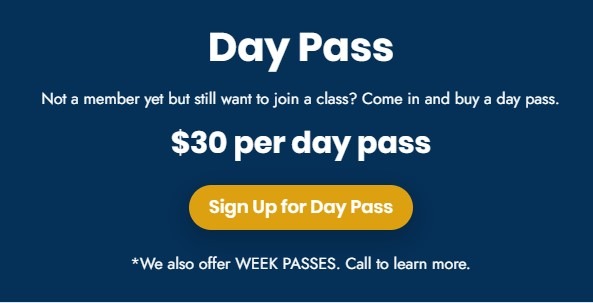
Image via Ocean Pacific Gym
The service costs $30 per day pass, which might seem high at first. However, the gym offers a day pass to make it easier for people to try it without a big commitment. This way, gym-goers can see if they like it without spending a lot of money upfront.
Much less scary, right?
6. Do More Research Before Doing Your Page Copywriting
Research is important because we want to know what has already been written. Then, we want to make our copy 100X better.
Google your primary and secondary keywords before you write a copy. Open Google’s top ten results in separate browser tabs, then read through each one.
You’ll get an idea of each content’s quality, length, supporting points, and style. Don’t copy the content; just improve upon it so you rank higher and impress your audience.
You May Also Like:
- Customer Journey Map – A Complete Guide to Help You Create Yours
- How To Create And Maintain Brand Loyalty Like a Pro in 2024
7. Use Your Distinct Personality or Unique Selling Proposition
If you’ve read a few of our blog posts here on Hello Bar, you might notice we have a distinct style:
- Writing in short, somewhat choppy sentences
- Using short paragraphs
- Employing incomplete sentences for effect
- Speaking to you in the second person
Additionally, we reflect Hello Bar’s unique selling proposition and brand in every article:
- Using Hello Bar to illustrate points
- Describing Hello Bar features to help readers understand how it can help
- Keeping the voice light but informative
You can use these copywriting tips to make your own content more consistent and enjoyable.
Take the time to define your tone and personality. Then, incorporate your USP into every piece of content you publish.
8. Refine Your Headline To Maximize Copywriting Results
Marketers often start with a working headline, and then return to it after finishing the content to refine it further. That’s okay.
You want your headline to give readers every reason to click. If it’s poorly constructed or inappropriate for your audience, you’ll sacrifice potential traffic. That’s never a good thing.
9. Emphasize Your Readers’ Freedom To Choose When Copywriting
This might seem contradictory, so let me explain.
Earlier, we mentioned that you should tell your readers what to do in your copy. Give them an order, especially in conversion copy.
However, you also want to let your readers know they have choices. This is particularly important in comparison-style articles.
For instance, in an article on A/B testing on the Crazy Egg blog, David Zheng compares different A/B testing tools, including Google Analytics, Optimizely, and Unbounce.
However, he saves Crazy Egg for last.
This article talks about Crazy Egg’s competition. That’s crazy, right?
Not really. It shows that you’re not afraid of comparison. Plus, it’s generous to the reader because they get help with comparison shopping.
10. Make the Copy Visually Beautiful
Your content needs to entice your reader. If it’s not aesthetically beautiful, it’ll turn off your audience instead.
This Sanrio popup is an example of great copy. It’s visually appealing because it uses bright colors that catch your eye. The text is clear and easy to read, making the message stand out. The overall design is fun and attractive, and the reader can’t help but look at it longer.
Image via Sanrio
11. Have a Purpose for Everything You Write in Your Sales Copy
Let’s take our example from above and show how you can go overboard with your sales copy.

In this example, we’ve completely overwhelmed the reader. The first three sentences don’t communicate anything of value — they’re standard, vague examples of sales copy.
Resist the urge to do that. Stick to one incentive and one offer in your Hello Bars. This goes for landing pages, opt-in pages, and sales pages, too.
Less is always more.
12. Think Like Your Ideal Customer
We love surveys and polls. We love email feedback even more. They tell what the target customer really wants.
You need to know those details.
If you can write content that resonates with your target audience, you’ll increase conversions and build brand loyalty. The customer thinks, “Hey, this guy speaks my language!”
And that’s a very good thing. You can completely miss the mark if you don’t know your target audience.
You May Also Like:
- How to Nurture Leads: Tactics and Experts Tips for 2024
- Learn How to Calculate Lead Conversion Rate to Measure ROI
13. Focus on Benefits When Writing Sales Copy
Ah, the age-old battle between benefits and features. Marketers want to focus on features, but readers care about benefits.
Check out this list of Hello Bar features:
- Create animated Hello Bars.
- Design exit popups.
- Demonstrate GDPR compliance.
- Ask for social shares.
Now, let’s look at some Hello Bar benefits:
- Boost your conversions through modals, sliders, and page takeovers that capture your audience’s attention.
- Run seamless A/B tests without having to sort through data manually.
- Build your email list by incentivizing signups.
You see the difference, right? A list of features is boring. It doesn’t help your audience understand your product or service.
A list of benefits, however, helps your audience see themselves using the product or service. They can visualize what they’ll gain from it.
14. Ask Questions That Get Readers To Say “Yes”
One of the most effective copywriting tips we can share is always give your reader the opportunity to say “yes.” Saying “yes” is often more important than the actual sale.
With Hello Bar, you can boost conversions even further by asking leading questions before your main ask. You want to set up the “conversation” so your reader is most likely to say “yes.”
Check out this leading question:
![]()
If you run a business, we guarantee your answer is “yes.” From there, you can take your reader through another question or two, then hit them with your main headline and CTA.
15. Use Active Voice To Lead Your Readers
Active voice confuses many marketers and writers. It seems so silly to quibble about verbs, yet it matters when speaking directly to your readers.
However, active voice matters.
Compare these two sentences:
- Hello Bar is a great conversion tool with all the features you need.
- Hello Bar offers conversion features to boost your sales and email signups.
We’ve changed more than the voice (the first is passive, and the second is active), but you get our drift. Instead of saying, “Hello Bar is…”, we’ve said, “Hello Bar offers…” It’s a small distinction, but it matters.
16. Back Up Your Claims With Solid Proof
Just like writing a good thesis, you have to back up your claims with solid proof. That’s why we love to use case studies in our content. They provide solid proof that we know what we’re talking about.
For instance, Valvoline, a premium automotive brand, increased its coupon send rate by 76% with Textel’s MMS Picture Texting. The brand also saw a 20+ second decrease in AHT, a 90+% swing to SMS vs. email coupons, and an 8% increase in coupon redemption rate.
That’s solid proof. Numbers don’t lie.
Social proof works really well, too. Testimonials, expert recommendations, and influencer reviews can help you convince readers to give your product or service another glance.
17. Mention the Most Important Point at Least Three Times
Three represents a pretty powerful number — and we’re not talking about the witches from “Macbeth.”
When you repeat something three times, it’s more likely to stick in your readers’ brains. They’ll remember the point, phrase, or sentence because they’ve seen it often.
That’s why it’s a good idea to use the same (or a similar) CTA on your Hello Bar, optin page, and other pages on your site. Drill it into your readers’ heads.
18. Include a Powerful Call to Action
Your CTA can make or break the conversion. Seriously.
Marketers who use boring, trite CTAs will often see dwindling conversions.
For instance, “Submit” is the worst CTA you can use. All it says is that your reader is going to submit a form. Boring. And a missed opportunity.
The best CTAs help the reader say “yes.” And who wouldn’t say “yes, please” to this CTA from Wool and the Gang.

Image via Wool and the Gang
The CTA is powerful because it offers a clear reward of 15% off, which grabs attention. It uses fun language like “JOIN OUR GANG,” making it feel friendly and inviting. Plus, it promises cool extras like new patterns and promotions, enticing people to sign up.
You May Also Like:
- Best 43 Call-to-Action Phrases Proven To Increase Clicks and Leads
- Ways to Use Calls to Action (CTAs) in Your Marketing Strategy
19. Describe Information Using Positive Frames
Negativity can work in certain situations. For instance, you can use negativity on the “No” button in your leading questions to buttress your point:
![]()
People don’t like to answer questions untruthfully. It goes against the grain.
However, when possible, frame information positively. Help the reader see a brighter future, a problem resolved, a goal attained, or information learned.
20. Maximize the Diversity of Your Word Choice When Copywriting
If you use the same language repeatedly, readers get bored. You probably already know this because of the books you’ve set aside in frustration.
The same concept applies to copywriting. If you vary your language, use surprising words, and delight your audience, you’ll increase the potential for conversions.
And that’s the strategy that Dooney and Brooke have adopted in their email sales copy. They use different phrases to keep their email copy interesting and fresh.
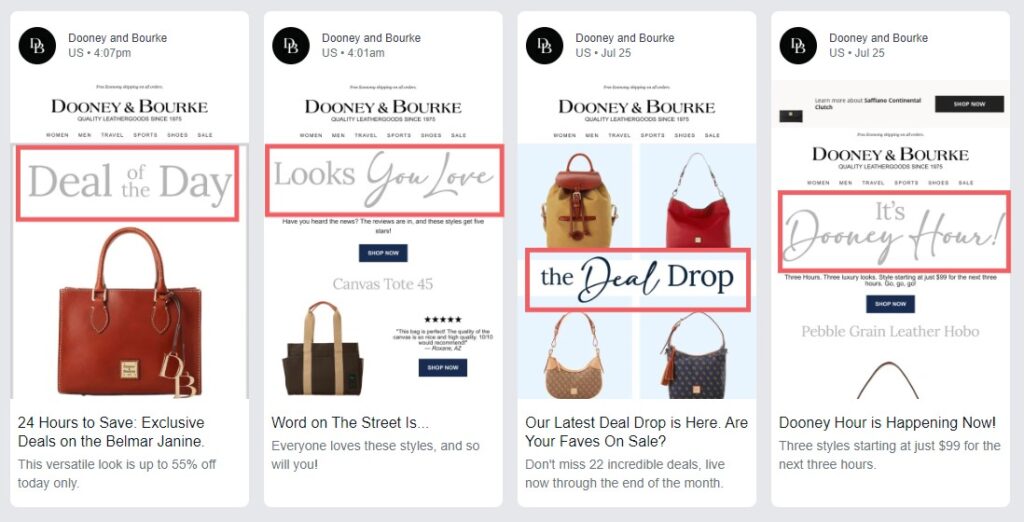
Image via Milled
21. Tell an Engaging Story to Create Concrete Mental Images
We love storytelling. It’s one of the most powerful copywriting strategies in the world. Moreover, a great story is 22X more memorable than just facts.
You can tell a true story about a problem you overcame or an issue you resolved. You can also set up a fictional story about an imaginary character.
Either way, descriptive storytelling helps engage your readers’ imaginations. They put themselves in the “main character’s” shoes.
22. Use Metaphors To Convey Intangible Concepts
Metaphors, when used correctly, help explain complex or intangible concepts.
If possible, choose a metaphor to which your target audience can relate. For instance, if your audience isn’t particularly sporty, don’t use a football metaphor to explain conversion rates. It’ll sail right over your readers’ heads.
23. Stay on Target
We’ve given you many copywriting tips to consider today, but if there’s one we want you to remember, it’s this: Stay on target. Avoid tangents at all costs.
Time is currency for many consumers. They only have a certain amount of time each day to spend, so they won’t waste it on content that doesn’t provide something valuable right away.
(By the way, that’s a metaphor. See above.)
The best writing happens during the editing process. Maybe you couldn’t help slipping into a tangent somewhere in the middle of your copy. Now that you’ve gotten it out of your system, delete it.
You May Also Like:
- Email Copywriting: 19 Proven Formulas to Use on Your Next Campaign
- Copywriting Tips: 23 Ultra Effective Steps to Increase Conversions
Bonus: 5 Email Copywriting Tips for Beginners
Believe it or not, there are still good things to come!
Email marketing is essential for any business. In fact, some marketers claim that their most valuable asset is their email list.
If you’re trying to convert prospects into leads, you want them to sign up for your email list. Then, once they sign up, you want them to open those emails, read them thoroughly, and engage with them.
How do you make that happen? Through exemplary copywriting.
1. Solve a Problem
Every email you send should mention and solve a problem. You don’t have to do it within the email itself. You can link out to quality resources.
For instance, let’s say we’re sending an email to our Hello Bar leads. We discuss the best way to clean their email lists without losing conversions.
In the email, we might say that many businesses struggle with keeping their email lists clean while maintaining high conversion rates. Then, we can link to our article on effective email list-cleaning techniques.
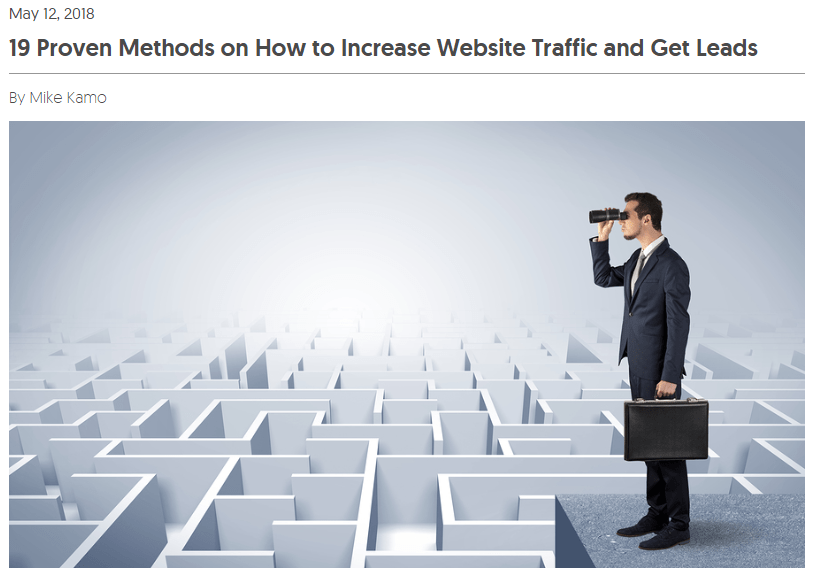
2. Focus on One Point at a Time
Emails shouldn’t be long. Remember, time is money.
Focus on a single point in your email. Think of it as a theme or goal. What do you want your reader to take away from the email?
3. Talk to the Reader on a Personal Level
Pretend you’re writing your emails to friends. Picture a single person and focus on them. Use casual language (if it fits your brand) and write in second person (using the word “you”).
4. Don’t Overpromise
It’s easy to get carried away when drafting emails. You want to promise the world.
Resist that urge.
Instead, promise only what you can deliver.
5. Avoid Clichés When Doing Email Copywriting
Cliches are insidious creatures that sneak into your emails and harm your brand. You might think you’re following traditional sales tactics, but you’re really destroying relationships.
For instance, using fake rationale will hurt you. Making excuses, such as “Our servers crashed” or “We had a problem with our email delivery service,” will make you look like an amateur.
So will fake urgency.
If you constantly “extend deadlines” for sales or promotions, your readers will pick up on it.
The same goes for labeling your email as “private.” Unless you’re sending an email to a single person, it’s not private. So don’t say it is.
You May Also Like:
- How to Build an Email List From Scratch: Start-to-Finish Guide
- Email List Cleaning: Clean Your List Without Losing Conversions
FAQs
Q1. What are the 4 C’s of copywriting?
The 4 C’s are:
- Clear: Use simple language and short sentences to capture attention.
- Concise: Deliver your message quickly, especially in social media posts and sales copy.
- Compelling: Make your copy interesting and persuasive by addressing the audience’s pain points.
- Credible: Use accurate information, testimonials, and statistics to build trust.
Q2. What is the 40-40-20 rule in copywriting?
The 40-40-20 rule is a guideline for crafting great copy:
- 40% Audience: Understand your customers to craft relevant messages.
- 40% Offer: Present offerings that meet customer needs.
- 20% Creativity: Use creative elements to attract attention and prompt action.
Q3. What are the 4 P’s of copywriting?
The 4 P’s are:
- Picture: Use descriptive language to show benefits.
- Promise: Clearly state the benefit or solution.
- Proof: Provide evidence like testimonials or statistics.
- Push: Use strong CTAs to drive action.
Q4. What are the 5 steps of copywriting?
They include:
- Research: Learn about your audience, product, and market.
- Plan: Organize your copy logically.
- Write: Begin with a first draft when you start writing copy. Use active language and short sentences.
- Edit: Revise for clarity and correctness.
- Test and Optimize: Use testing and feedback to improve.
Q5. What is the golden rule of good copywriting?
The golden rule is to “know your audience.” Understand their pain points and motivations to create compelling content.
Conclusion
Using the above copywriting tips, you can improve your conversion rates and build better customer relationships. It sounds tough, but it becomes second nature once you get used to applying these writing rules.
Start by getting a good grasp of content marketing. Read lots of content and figure out whether or not you liked it. Why or why not?
Then, use these copywriting tips in every content you write, including an exit popup and a 4,000-word article. If you’re conducting email marketing (and you should), carefully consider our five bonus tips.
What’s your favorite copywriting tip?



